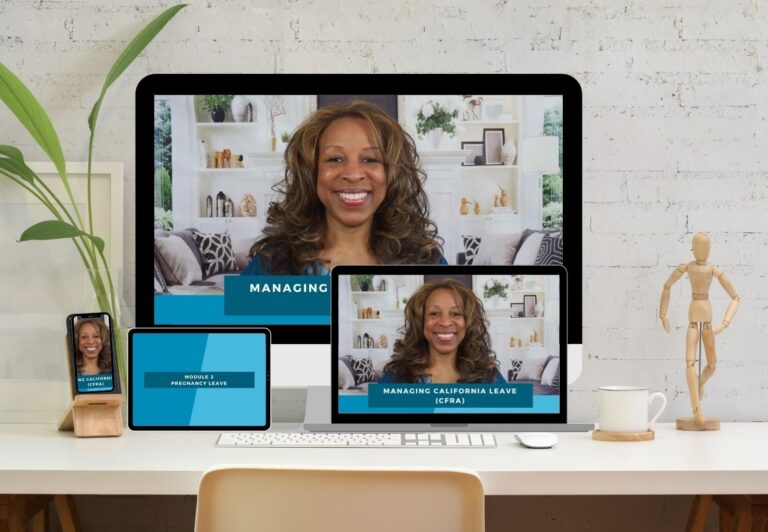Moonlighting in California

By VICKY BROWN
This topic came up for me recently – the issue of moonlighting. That’s the practice of holding a second job, often in the evening or during free hours, in addition to one’s primary job. It’s kind of been in the news a lot lately – with people working remotely from home there are all sorts of stories about them having multiple jobs, and their employer (or should I say – employers) didn’t even know.
Now, I know for a lot of employers – that kind of makes your hair stand on end. But the fact is that, depending on where you’re located, moonlighting may be protected. Actually in California, it’s not uncommon for employees to take on secondary roles to support their lifestyle, passions, or simply to explore a new opportunity. And yes, California is one of those states that protects moonlighting.
Yes, in California, moonlighting is not illegal. This state, like many others, protects what an employee does during their non-work hours. However, it’s not as clear cut as it sounds. There are guardrails around conflict of interest, performance, and company policies that can create a complex matrix for both you as the employer and your team member to navigate.
California has always been at the forefront of employee rights. The state firmly believes in an individual’s right to privacy and autonomy, especially when off the clock. That principle holds that, what an employee does during their own time is their business, so long as it doesn’t violate any laws or explicit company policies.
And now, the guardrails: the first is the grey zone of Conflict of Interest. One of the primary concerns most businesses have is the potential conflict of interest that can happen when an employee moonlights.
What if their secondary job is with a competitor or a vendor? Or, what if their role in the other job actually compromises the integrity or confidentiality of their primary job?
“…The state firmly believes in an individual’s right to privacy and autonomy, especially when off the clock.“
Well, that’s where company policies can play a role. To safeguard its interests, a business can require their employees to disclose any external employment. Then the company can assess whether the secondary job presents any potential conflicts.
For instance, if you’re running a software development firm and discover one of your key developers is moonlighting for a direct competitor, it’s reasonable to worry about intellectual property leaks.
But, if your policy requires the employee to disclose that other relationship, well then you can take a reasonable look at what’s involved, and determine if that is a real or potential problem. So, if the other job is for them to work 9:00 – 5:00 Monday – Thursday in customer service, and your job is for them to work 9:00 – 5:00 Monday – Friday in customer service – well then, those two things can happen at the same time. And in fact, that time isn’t the employee’s own time, it’s time they are obligated to you. So (and you knew I would say this sooner or later) check with your labor counsel. But it would be pretty difficult for that employee to make an argument for holding those two jobs at the same time.
Beyond conflicts of interest, there’s the issue of job performance. Working multiple jobs can be taxing, both mentally and physically. If an employee’s performance in their primary role starts to slip due to fatigue, distractions, or divided commitments from their secondary job, it’s a valid concern for employers.
And while California employers can’t penalize someone simply for having a second job, they can hold them accountable for not meeting their job responsibilities or performance standards. So, leaders have got to maintain open communication channels, and make sure that both; employees understand the expectations, and that they’re consistently met.

So, one of your employees just told you that she’s pregnant. Feeling overwhelmed, with no idea where to start? After all, HR just got dumped on your plate. It’s not your zone of genius, and you don’t want it to be.
Managing California Leave is your answer. It’s an easy to understand course, that explains what the various leave programs are – without the HR gobbledy gook. And it gives you a clear step by step guide that walks you through the process of putting someone on leave
Yep, you get all the forms, notices and documents too. Everything you need to do it right and do it fast. After all, you don’t have all day – you have other things to do!
Use the link to get an Insider’s sneak peek And don’t worry – you’ve got this. And we’ve got you.
OK – so what’s the fix, what should you do? Well, there are 4 key best practice points:
First up – Disclosure: You should have a clear policy in place that requires employees to disclose any secondary employment. It’s not about control, but it is about understanding and managing potential risks. You have to have a process in place that makes sure you are kept in the loop
Next – Performance Reviews: Regular check-ins can help assess if that employee’s secondary job is impacting their performance in their primary role. Be objective, and base any decisions on actual job performance and not just because you’re out of sorts because they have a second job.
Conflict Assessment: If your employee discloses secondary employment, take the time to evaluate any potential conflicts genuinely. And remember to avoid knee-jerk reactions and assess each situation on its own merits.
And finally – Education: Employees may not fully understand the potential pitfalls or challenges of moonlighting. Regular training or informational sessions can help guide them so they make informed choices.
Spread the word
MORE HUMAN, MORE RESOURCES
310.308.7680 option 1
hello@idomeneoinc.com

